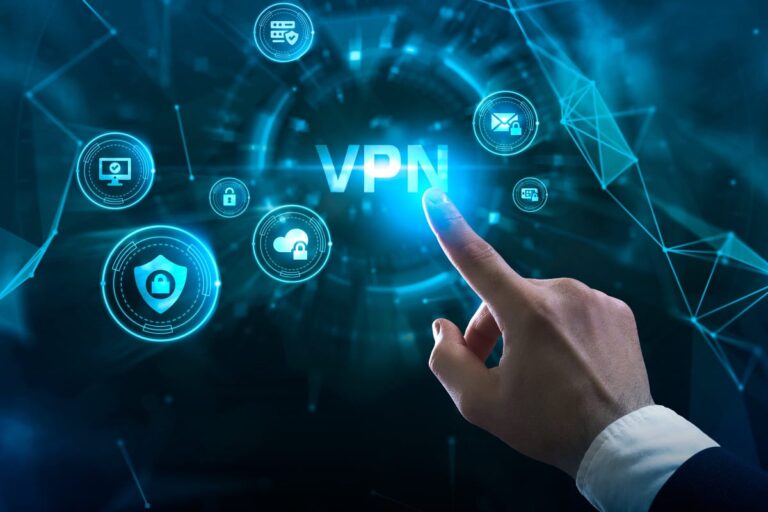5G Rollout: How Telecom Companies are Transforming Connectivity for Businesses and Consumers
The deployment of 5G globally is not merely an evolution in the mobile network through which we connect every day, but a full revolution for business cases and consumer devices as well. Now as a number of telecoms contend to be the first network provider preparing commercial 5G services in cooperation with suppliers, it will make more differences economically and in day-to-day life.
In this article we will delve into the major aspects of this transformation, and how the telecom enjoys them as well as faces challenges across their way.
Telecom Industry Overview
The fundamental strategic challenge facing the telecommunications industry is common and similar to one that has long existed in other mature industries such as utilities. The industry delivers critical services used by billions of consumers and almost every business. Video traffic will account for the majority of this growth in global data consumption over telecom networks, rising from 3.4 million petabytes PB to 9.7 million PB between 2022 and 2027.
However, with essentially zero pricing power visible for providers over low-margin connectivity and data sales, we expect internet access revenues – the nearest thing to broadband activity spending – to increase at a modest 4% CAGR to US$921.6 billion by the end of our forecast period in 2027.
Simultaneously the huge investment that telcos are required to make in their expensive infrastructure in order for them to be able to serve customers at all. In 2027, telcos are also expected to invest an additional US$342.1 billion into their networks as the transition to 5G continues and newer technological standards take hold.
The Significance of 5G Rollout
Earlier, the Telecom industry was the root of global communication. It has transitioned from landline services to mobile connectivity, broadband internet and now 5G, requiring companies to re-engineer their infrastructure as it goes along. As 5G rolls onto the scene today, the industry is set to undergo yet another tectonic shift — and this time around, there is a lot on the line.
5G isn’t just about faster download speeds for business, it’s also a new tool that could allow real-time data analytics or edge computing – let alone Internet of Things (IoT) on an enormous scale. Its implications for consumers are equally significant, however, bringing the promise of better streaming quality (hence smoother video playback and more reliable music playback), plus new AR/VR experiences as a gateway to even smarter homes.
But the path to 5G is not a walk in the park. Telecommunications operators face legal challenges, must modernize their creaking infrastructure and absorb the enormous financial burden for building 5G networks. All whilst putting the customer first in each service offering.
Fast speeds, low latency and an increasing number of supported connected devices are what 5G has brought to the table as one of the biggest telecom industry trends. Telecom companies use it to provide high-level services from ultra-fast mobile internet or latest IoT technologies which change the face of healthcare, transportation and entertainment sectors forever. And this change is not just increasing operational efficiency, but also paving ways to newer revenue models for the companies in telecom space.
Challenges and Benefits of the Telecom Digital Transformation
The 5G rollout is a crucial aspect of the larger digital transformation that telecoms are being forced to undergo. Digital to the Telecom industry – for years, digital transformation for telecom has always been about transitioning from analog networks into the digital world, migrating towards a cloud-centric interface and leveraging data as much as possible in order to improve customer experiences. This time, though, 5G upped the ante.
Benefits:
- Higher speed: With up to hundred times the speeds of what we have with 4G, businesses and consumers can enjoy real-time connectivity in near-zero latency.
- Greater Throughput: Telecoms can handle massive volumes of devices at a time, which paves the way for smart cities and other IoT-centric infrastructures.
- New Revenue Streams: by allowing network slicing, new business models are created to cater specific requirements based on use cases like healthcare industry connection automotive and or entertainment.
However, this digital transformation isn’t without its challenges:
- Infrastructure Costs: The costs of building out 5G networks are substantial, ranging from all-new antennas through to more sophisticated data centers.
- Cybersecurity Risks: As the number of connected devices soars, better and more flexible security protocols are a must in order to deal with control breaches (among other threats).
- Regulatory barriers: Operators face complex regulations at the national and international level that hinder deployment rates in some areas.
The 5G rollout has been a key component of this broader digital transformation underway across various industries. When businesses move to the cloud, embrace AI and automate their operations 5G is the infrastructure that enables this innovation.
Cities have begun to emerge as smart cities from a bird’s-eye view through data sent in real-time across connected devices, allowing utilities and transport industries to monitor energy use and traffic flows – not forgetting the benefits for public safety. It also makes cities more sustainable, reduces carbon footprints and generally improves standard of living for residents.
5G and Telecommunications: Evolving Global Connectivity
For 5G, the power remains that it can transform connectivity across sectors and consumer markets. Central to this shift is the role played by telecom companies, who have empowered otherwise unimaginable benefits through which the digital economy now prospers.
The benefits of 5G for the industry:
- Manufacturing: Factories can use real-time analytics with little to no latency in order to automate processes, predict machine failures and the like, making for greater efficiency.
- Healthcare: 5G enables telemedicine, remote surgery and continuous monitoring of patients, making healthcare more democratized and real-time.
- Entertainment: Enabling augmented reality gaming and making streaming 4K video be smooth as silk, 5G transforms how users experience content – immersing them further in a digital world that we are rapidly melding with the physical.
- Smart Cities: As cities get smart, they can use 5G for the real-time management of traffic systems, energy grids and public safety services to significantly enrich the quality of life for their residents.
For consumers, 5G brings more than faster internet:
- Increased Speed: Although the most common benefit from 5G that consumers can look forward to will be a faster internet connection, there are many other aspects of our lives that this technology will greatly improve.
- Improved Mobile Experience: You will be able to watch videos without buffering, download things a lot faster and start playing mobile games smoother.
- Smart Homes: 5G will enable smart homes that need to connect many more devices – from refrigerators that can automatically order groceries to advanced AI security systems.
- Immersive Experiences: From virtual and augmented reality applications that will go mainstream to a host of other 5G use cases, the new networks are expected to bring broader bandwidth needed for smooth and immersive experiences.
Conclusion
A model for innovation, the 5G rollout is one of the most significant changes in connectivity to be made available by a telecom industry concerning both business and customer. Though the path may be difficult (due to issues like infrastructural costs and cyber risks), swiftly, smoothly interconnected communications capabilities make these challenges worthwhile.
5G and digital transformation put telecom companies at the helm of future connectivity, booming innovation across industries. 5G is a promise of a simply better connected, more efficient and more immersive consumer world. This will be just a start of what next generation telecom technology can do for businesses and individuals as the rollout continues.




